Trump tariffs: US escalates trade threats to China
- Published
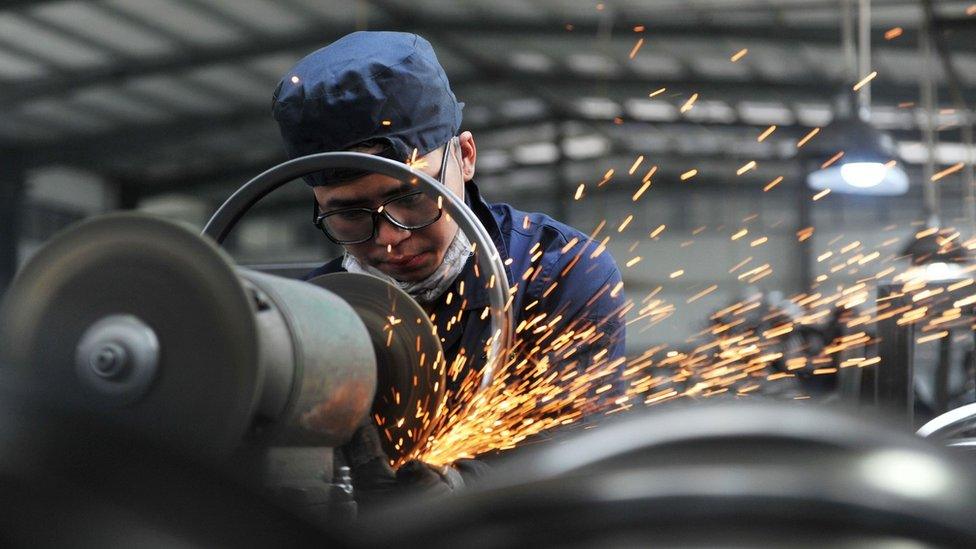
The new threat comes after Beijing vowed to retaliate against US tariffs on $50bn worth of Chinese goods
US President Donald Trump has threatened to impose tariffs on an additional $200bn (£151bn) of Chinese goods in a growing trade row.
Mr Trump said the 10% tariffs would come into effect if China "refuses to change its practices".
The threats would be a major escalation of the dispute and sparked further falls on stock markets.
In the US, the Dow Jones was down more than 300 points (1.6%) when trading opened in New York on Tuesday.
Stock markets in Asia had fallen sharply earlier, with Shanghai faring the worst, down 3.8%. European markets also suffered, with some trading more than 1% lower.
China responded by accusing the US of "blackmail", raising fears of a full-blown trade war.
Its commerce ministry said the country would take "qualitative" and "quantitative" measures and "fight back firmly" against additional tariff measures by the US government.
Mr Trump insists that China has been unfairly benefiting from a trade imbalance with the US for years.
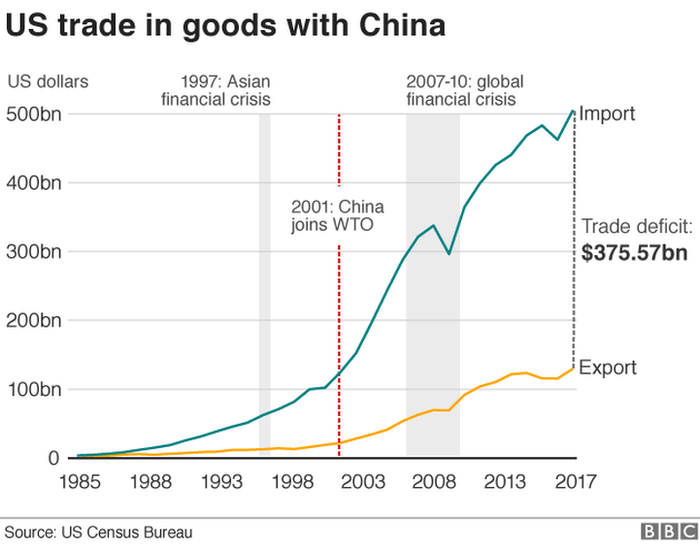

During the 2016 election campaign, he promised to use tariffs to cut the US trade deficits.
But many economists have warned that tariffs are likely to make products more expensive for US consumers and hurt some of the businesses the administration is trying to protect, which depend on China for parts or assembly.
How did the latest spat unfold?
Last week, Mr Trump confirmed that the US would impose 25% tariffs on $50bn worth of Chinese goods.
Beijing responded by saying it would hit 659 US products worth $50bn - including agricultural products, cars and marine products - with a similar tax.
How hogs and Harleys became weapons in a looming trade war
Late on Monday, the US president condemned China's "unfair practices related to the acquisition of American intellectual property and technology".
He added: "Rather than altering those practices, it is now threatening United States companies, workers, and farmers who have done nothing wrong."
Mr Trump added that new tariffs would "go into effect if China refuses to change its practices, and also if it insists on going forward with the new tariffs that it has recently announced".
"If China increases its tariffs yet again, we will meet that action by pursuing additional tariffs on another $200bn of goods."
China's commerce ministry reacted swiftly, saying: "If the US acts irrationally and issues a list, China will have no choice but to take comprehensive measures of a corresponding number and quality and take strong, powerful countermeasures."
US-China trade war timeline
January 2018 - The US announces tariffs on imported solar panels and washing machines
March - Mr Trump unveils plans for a 25% tariff on steel imports and a 10% charge on aluminium
April - China announces tariffs on US imports ranging from 15% to 25% on goods ranging from steel pipes to pork
May - The US and China put tariff plans "on hold" after talks
June - Mr Trump decides to push on with plans to impose tariffs in July
One analyst wondered if performance at the polls might be behind Mr Trump's latest move.
Ritu Vohora of M&G Investments told BBC Radio 4's Today programme: "There is a lot more at stake here for Trump with the mid-term elections in November. China clearly is very much wanting to be this global tech leader, so neither side really wants to back down."

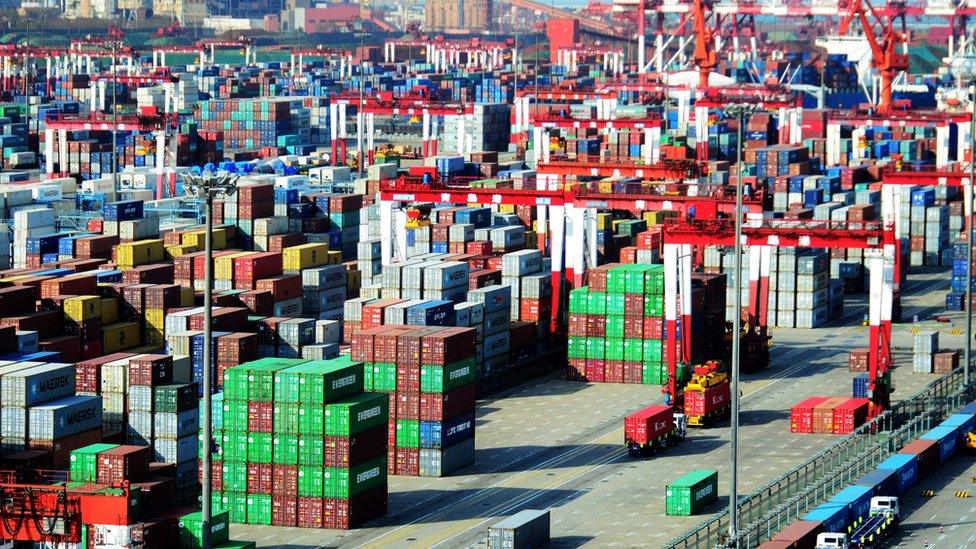
A potential political cost
BBC economics correspondent Andrew Walker
Being tough with China plays well with many of President Trump's supporters, actual and potential, at a time when he is looking ahead to the Congressional elections in November.
It could also be that he thinks China will run out of US imports against which to retaliate.
After all, the US sells a lot less to China than the other way around.
But there is also a potential political cost for the president. Many in the Republican Party, who are more instinctively in favour of free trade, don't think this is the right way to tackle problems with China.
And as Mr Trump increases the range of goods subject to tariffs it becomes harder for American importers and consumers to avoid the cost by finding alternative suppliers.
In the separate dispute about steel and aluminium tariffs, he also has to contend with the politically targeted retaliation that other countries such as Mexico, Canada and the EU have in hand, intended to hit important states in the mid-term elections.

What products are affected?
The US tariffs previously announced affect more than 800 Chinese products from aircraft tyres to turbines and commercial dishwashers worth $34bn and are due to come into effect on 6 July.
In his latest statement, Mr Trump said that he had asked his advisers to identify additional Chinese products on which to impose new tariffs.
The White House says China encourages transfer of intellectual property - design and product ideas - to Chinese companies, through measures such as requiring that foreign firms share ownership with local partners to access the Chinese market.
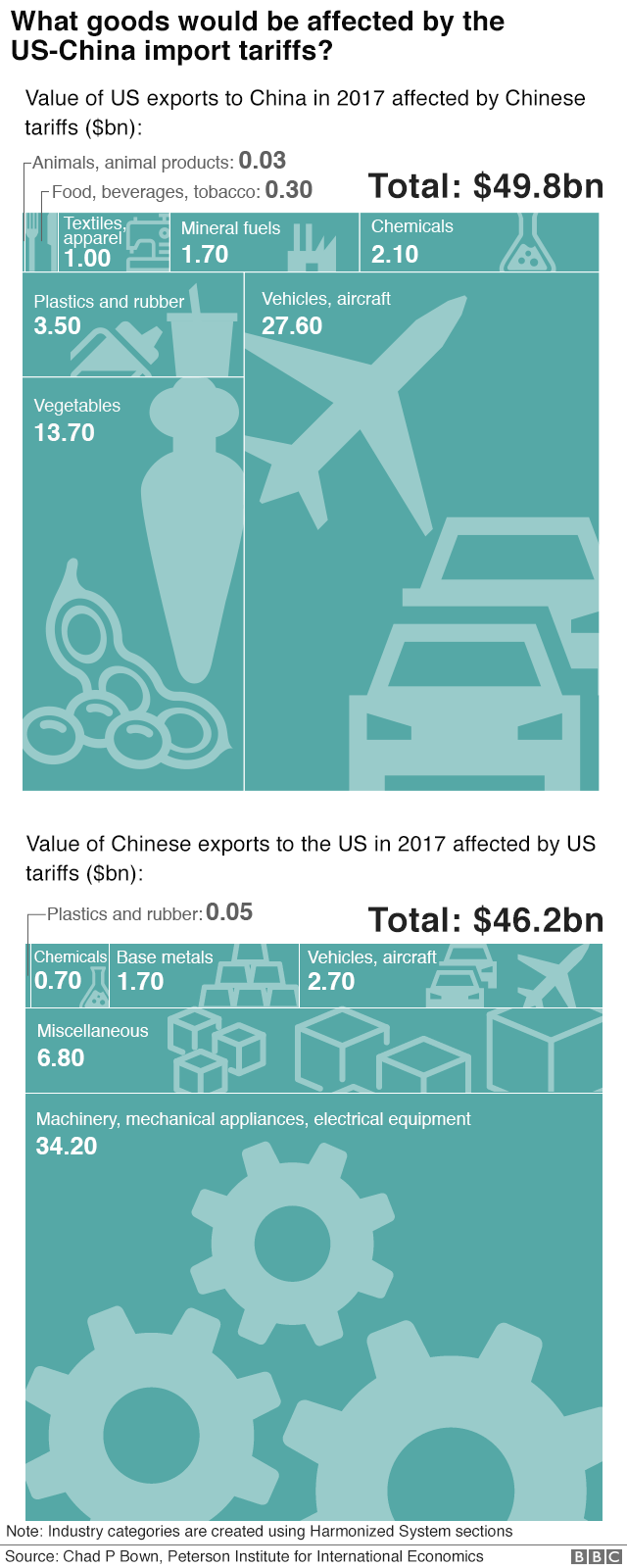
- Published19 June 2018

- Published15 June 2018
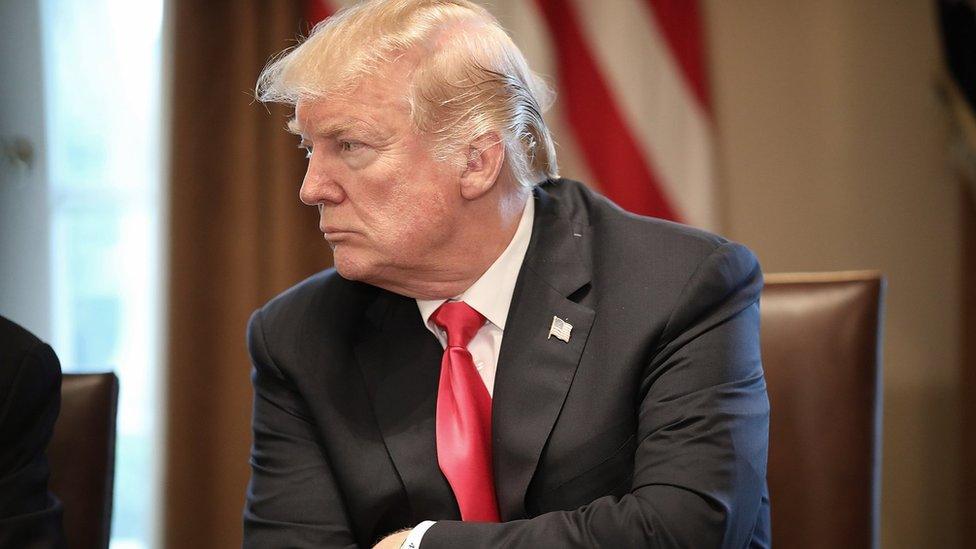
- Published15 June 2018

- Published1 June 2018
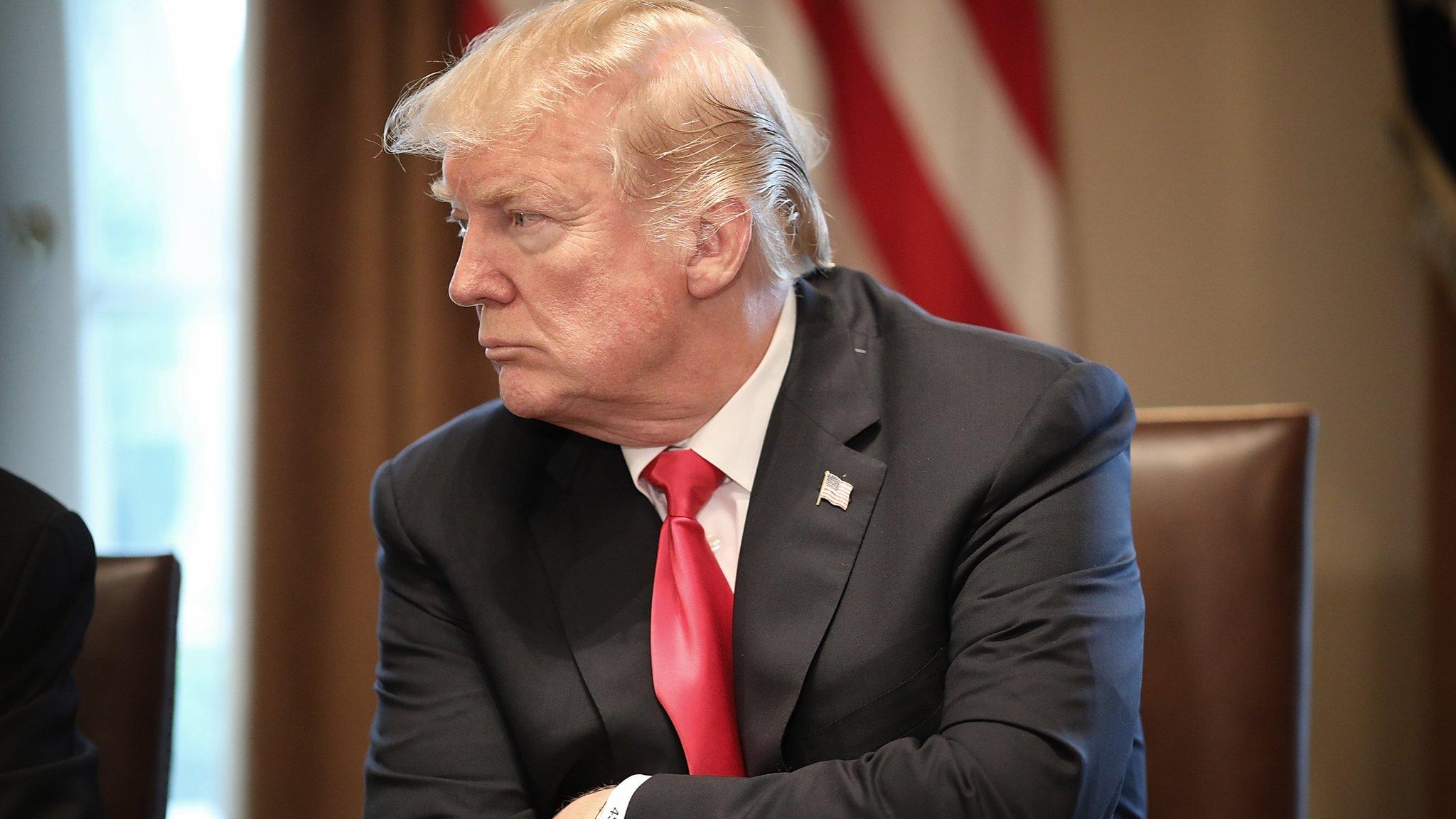
- Published6 April 2018
